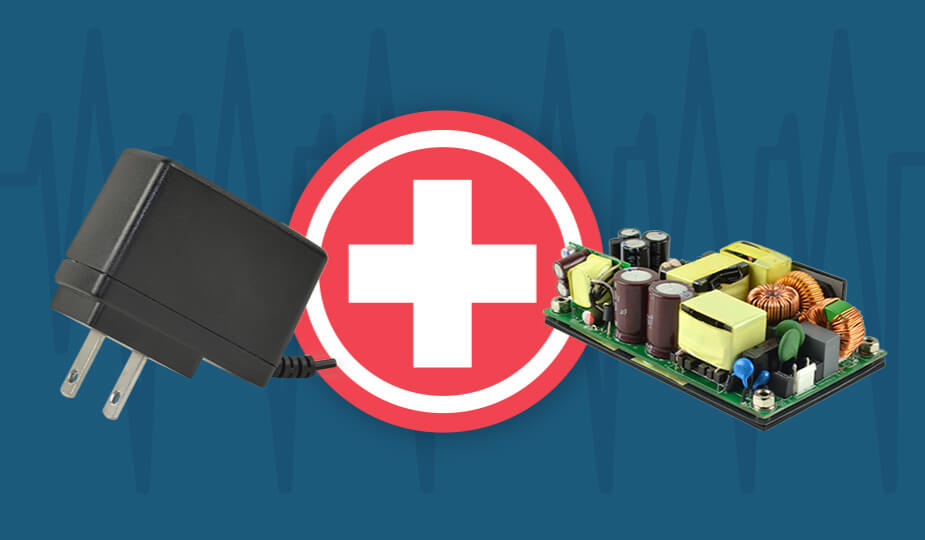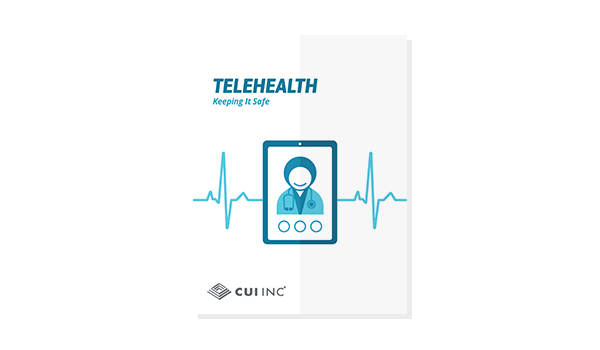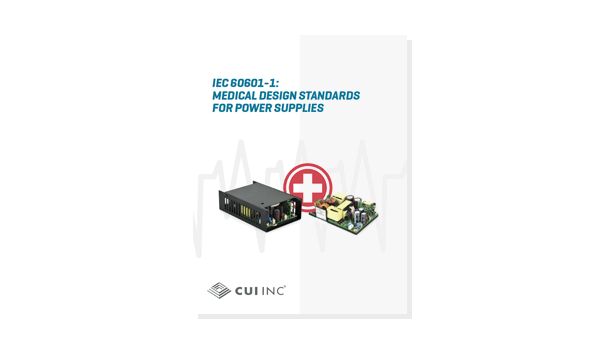Wichtige Sicherheitsaspekte für Stromversorgungen in der häuslichen Gesundheitsvorsorge
7. März 2023 von Ron Stull – Lesezeit: 7 Minuten
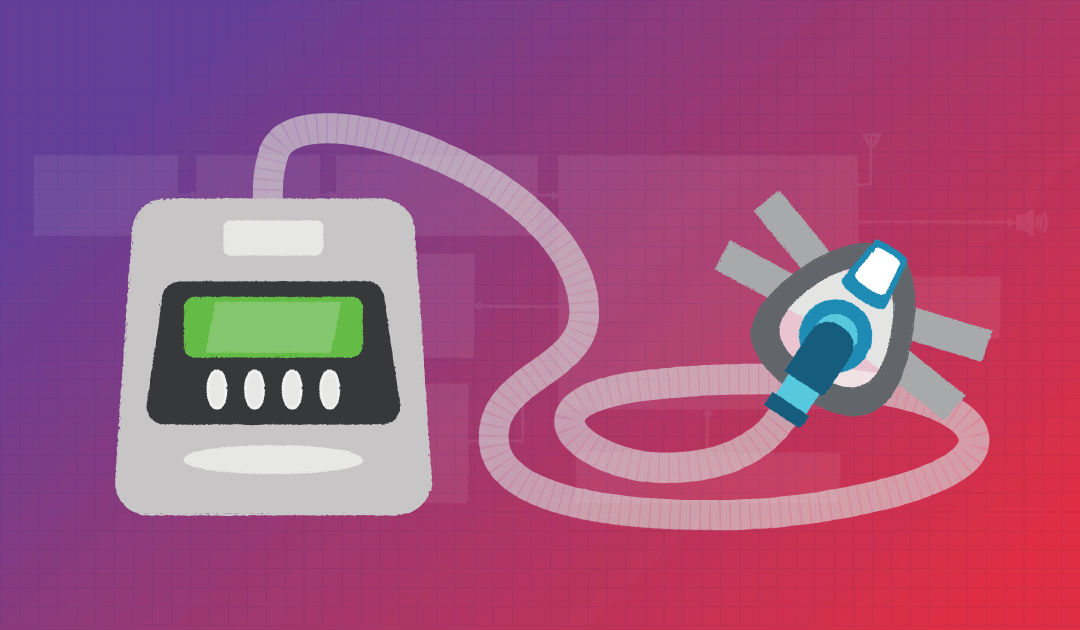
Das Internet der medizinischen Dinge
Die häusliche Gesundheitsvorsorge ist nicht neu, aber das Wachstum des Internets der Dinge (IoT) hat zum sogenannten Internet der medizinischen Dinge (IoMT) und zur Entwicklung einer breiten Palette neuer medizinischer Geräte geführt, die für die häusliche Nutzung geeignet sind. Diese Geräte können die Gesundheitskosten senken, bieten eine Echtzeit-Überwachung der Vitalwerte und anderer Gesundheitsindikatoren und sind im Allgemeinen bequemer für den Patienten. Trotz all dieser Vorteile birgt die häusliche Umgebung jedoch auch einige Risiken, die in einer klinischen Umgebung nicht vorhanden sind. Dazu gehören:
- ungeschulte Benutzer von medizinischen Geräten
- inkonsistente Stromqualität und Infrastruktur
- unkontrollierte Umgebung
IEC 60601-1-11 Ergänzungsnorm für häusliche Gesundheitsvorsorge
Um diese Bedenken auszuräumen, hat die Internationale Elektrotechnische Kommission (IEC) die IEC 60601-1-11 entwickelt, eine Zusatznorm zur IEC 60601, die die allgemeinen Sicherheitsanforderungen und die Leistung medizinischer elektrischer Geräte definiert, die in der häuslichen Gesundheitsvorsorge verwendet werden. Diese Norm stellt zusätzliche Anforderungen an Geräte, die in der häuslichen Gesundheitsvorsorge verwendet werden, um den Unterschieden zwischen der häuslichen und der klinischen Umgebung Rechnung zu tragen, einschließlich ungeschulter Benutzer und einer weniger kontrollierten Umgebung.
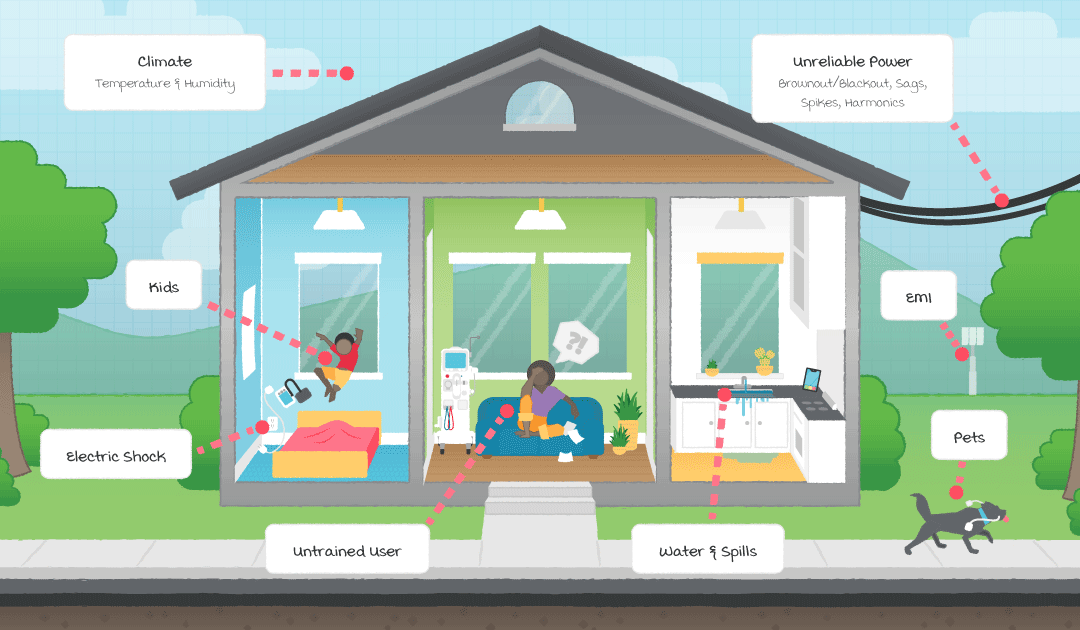
Wie bei vielen Anwendungen ist die Stromversorgung eine kritische Komponente, wenn es darum geht, die Sicherheit zu gewährleisten, und einige der zusätzlichen Anforderungen, die an medizinische Geräte für den Heimgebrauch gestellt werden, wirken sich direkt auf die Wahl der Stromversorgung aus. In diesem Blog beschreiben wir einige der wichtigsten Überlegungen, die Sie bei der Auswahl eines Netzteils für die häusliche Gesundheitsvorsorge anstellen sollten.
Medizinische Geräte für den Heimgebrauch erfordern einen größeren Eingangsspannungsbereich
Im Vergleich zur klinischen Umgebung sind Privathaushalte unter Umständen anfälliger für starke Netzspannungseinbrüche. Wenn die Spannung unter den Eingangsspannungsbereich des Netzteils fällt, kann das Netzteil seinen Betrieb einstellen und sogar ausfallen. Dies ist für medizinische Geräte nicht akzeptabel. Während die Basisnorm von einem Netzspannungsbereich von 90–110 % der Nennspannung ausgeht, gilt in der Norm für die häusliche Gesundheitsvorsorge ein Bereich von 85–110 % für nicht lebenserhaltende Geräte und von 80-110 % für lebenserhaltende Geräte.
Für einen universellen Eingangsbereich (d. h. 100–240 VAC Nennspannung) ergeben sich folgende Eingangsspannungsbereiche:
- Nicht lebenserhaltende Geräte: 85 VAC bis 264 VAC
- Lebenserhaltende Geräte: 80 VAC bis 264 VAC
Herausforderungen bei Schutzleiteranschlüssen in Häusern
Überall auf der Welt können die Qualität der lokalen Strominfrastruktur und die Anforderungen von Haus zu Haus und von Ort zu Ort sehr unterschiedlich sein. Das hat zur Folge, dass nicht alle Steckdosen über einen Schutzleiteranschluss verfügen oder, falls ein solcher vorhanden ist, nicht garantiert werden kann, dass er ordnungsgemäß installiert ist. Aus diesem Grund müssen medizinische Geräte für die häusliche Gesundheitsvorsorge, die nicht fest installiert sind, der Klasse II angehören oder intern mit Strom versorgt werden. Sie dürfen keinen funktionalen Erdungsanschluss enthalten und die verwendeten Teile müssen entweder für Body Floating (BF) oder Cardiac Floating (CF) ausgelegt sein.
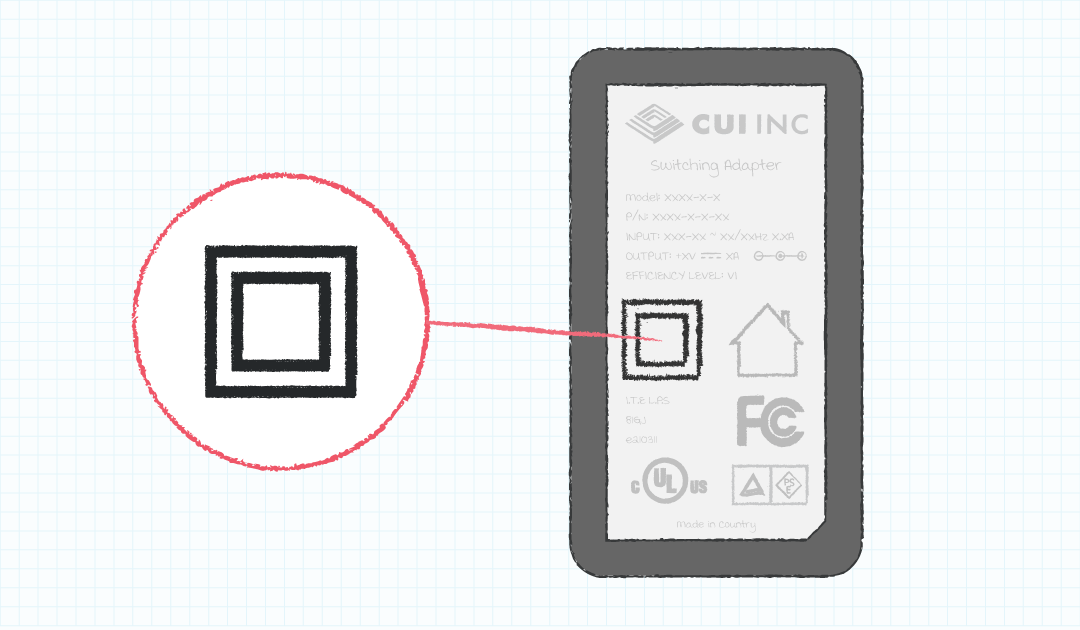
Geräte der Klasse I sind auf die Erdung als Schutzmaßnahme angewiesen, was problematisch wäre, wenn das Haus oder die Wohnung, in dem oder der das Gerät verwendet wird, nicht über eine ordnungsgemäße Erdung verfügt. Geräte der Klasse II verwenden eine doppelte oder verstärkte Isolierung als Schutzmaßnahme, um die Abhängigkeit von einer ordnungsgemäß installierten Erdverbindung zu beseitigen.
Bedeutung der EMV-Klasse B für Geräte der häuslichen Gesundheitsvorsorge
Die Anforderungen an die elektromagnetische Verträglichkeit (EMV) sollen sicherstellen, dass die Geräte in der vorgesehenen elektromagnetischen Umgebung ordnungsgemäß funktionieren und andere Geräte in diesem Bereich nicht stören. Die Geräte werden in der Regel als Klasse A oder B eingestuft, wobei Klasse B strenger ist und für eine Wohnumgebung gilt und Klasse A für die meisten anderen Orte gilt. Die Anforderungen für jede Klasse sind in CISPR 11 definiert. Geräte für die häusliche Gesundheitsvorsorge müssen als Klasse B eingestuft werden, da sie für Wohnbereiche bestimmt sind.
Stoß- und Vibrationstests
Die Geräte für die häusliche Gesundheitsvorsorge müssen auch einer Vielzahl von Stößen und Vibrationen standhalten können. Verschiedene Gerätetypen werden von der IEC 6060-1-11 klassifiziert, um verschiedenen Anwendungsfällen und Anwendungen Rechnung zu tragen. Dazu gehören fest installierte oder stationäre, handgehaltene, am Körper getragene, tragbare und mobile Klassifizierungen sowohl für nicht transportfähige als auch für transportfähige Geräte.
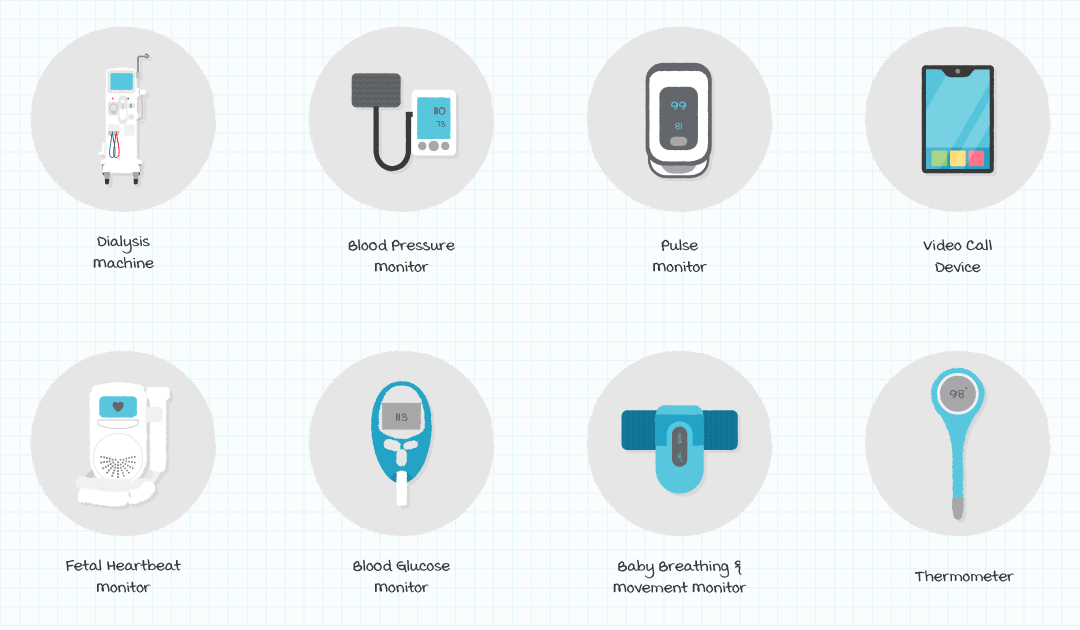
Jeder Fall hat seine eigenen Anforderungen und muss sicherstellen, dass die grundlegende Sicherheit und die wesentliche Leistung erhalten bleiben. Stoßtests sind in IEC 60068-2-27 definiert und Vibrationen in IEC 60068-2-64. Tragbare und handgehaltene Geräte müssen auch Tests zum freien Fall gemäß IEC 60068-2-31 unterzogen werden. Die Art und der Umfang der Tests hängt von der Geräteklassifizierung ab.
Umweltbelange
Ein zu heißer oder zu kalter Betrieb kann große Auswirkungen auf eine Stromversorgung haben. Bei kalten Temperaturen können Stromversorgungen Schwierigkeiten beim Starten haben und Probleme mit der Restwelligkeit und der Regelung aufweisen. Heiße Temperaturen können Übertemperaturschutzmaßnahmen auslösen oder zu einem Ausfall führen. Während die Umgebung in klinischen Umgebungen gut kontrolliert wird, kann sie zu Hause sehr unterschiedlich sein. Der Standard für die häusliche Gesundheitsvorsorge legt Grenzwerte sowohl für die Betriebs- als auch für die Lagerungs-/ Transportbedingungen fest (Tabelle 1).
| Bedingung | Temperatur | Feuchte |
|---|---|---|
| Transport und Lagerung | -25 °C bis 70 °C | 0 % bis 93 % |
| Betrieb | 5 °C bis 40 °C | 15 % bis 93 % |
Transitfähige Geräte müssen auch auf Temperaturschock getestet werden. Bei Temperaturschocktests werden die Bedingungen innerhalb von 5 Minuten von einem Minimum auf ein Maximum erhöht und dann über 2 Stunden gehalten, während die wesentliche Leistung getestet wird. Der Test wird dann in umgekehrter Reihenfolge durchgeführt, d. h. von Maximum auf Minimum und wieder zurück, um die Leistung zu bewerten.
Auswahl von Stromversorgungen für Anwendungen in der häuslichen Gesundheitsvorsorge
Stromversorgungsunternehmen wie CUI Inc. bieten eine breite Palette interner und externer Stromversorgungen an, die medizinisch zugelassen sind. Bei Anwendungen in der häuslichen Gesundheitsvorsorge ist darauf zu achten, dass die Netzteile die zusätzlichen Anforderungen erfüllen, die IEC 60601-1-11 an medizinische Geräte stellt. Ein solides Verständnis der Norm wird Ihnen helfen, die richtigen Geräteklassifizierungen und Tests zu bestimmen, die für den Nachweis der Konformität erforderlich sind. Das erfahrene CUI-Team der Stromversorgungsexperten kann Ihnen helfen, sich in der breiten Produktpalette zurechtzufinden und die optimale Lösung für Ihre Anwendung in der häuslichen Gesundheitsvorsorge zu finden.
Produktauswahl, Sicherheit und Konformität
Das könnte Ihnen auch gefallen
Haben Sie irgendwelche Kommentare bezüglich dieses Beitrags oder Themen, die wir in der Zukunft besprechen sollten?
Senden Sie eine E-Mail an powerblog@cui.com
